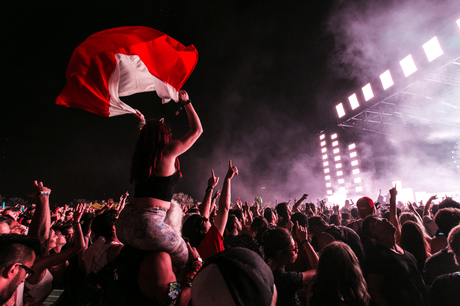Last year marked the 50th anniversary of the event that is often credited to have started the trend of music festivals. The legendary "Woodstock Music and Art Fair" held on a farm near Bethel, New York, gathered an amazing lineup of rock, folk, and other performers, and attracted a crowd of around 400,000 attendees. This may come as a surprise to some, though: Woodstock wasn't the event that served as a model for today's American (and global) festival scene. While it was indeed a major moment in history, jumpstarting the counterculture movement, it was a one-off, not a recurring event.
If anything, Coachella - one of the biggest and best-known music festivals in the world - was the opposite of Woodstock. Its organizers admittedly tried to recreate the atmosphere of successful European festivals in 1999: smaller crowds, many performers, free parking, and acts selected based on artistry rather than radio popularity. As a result, the first edition of the festival fell way short of its planned attendance and lost a ton of money. Still, it left a lasting mark on the emerging American festival scene - it was praised by critics and attendees alike. The festival struggled for a few years, then it showed its worth, growing into one of the biggest and best-known of its kind. Today, its stages are home to the biggest acts, from famous rappers to the highest-paid female singers in the world, and it attracts massive crowds on each of its days.
Music festivals have become a massive business today. Aside from the big names on the market - like Coachella in the US and European contenders like Sziget, Creamfields, EXIT Festival, and many others - there are a series of smaller, more niche events held each year, all over the world. While these little ones don't attract masses comparable to the big names, they do have quite the attendance in their own categories. One of them, the psychedelic music and art festival O.Z.O.R.A., routinely attracts a crowd of 60,000 to 70,000 people each year. All this on a field next to a small village in the middle of Hungary.

According to some analysts, though, the explosive growth the international music festival scene has seen in the last decade or so will be its demise. Today, the festival calendar is becoming overcrowded, with an ever-increasing number of events competing for the attention of the same pool of potential clients. At the same time, there are more gigs the artists themselves can choose from - and many of them decide where to perform based on the amount they get paid. And these amounts can be stellar, too. Last year, Coachella reportedly paid somewhere between $4 million and $8 million each to its headliners, Beyoncé, and Ariana Grande. This is not a phenomenon endemic to the US, though. In 2016, Sziget Festival was the subject of serious scrutiny after Rihanna's underwhelming and short performance - especially after it was reported that the artist was paid around $1 million.
With so many events competing for the same popular artists, it is normal for their pay to increase (it's the rule of the market, after all, that where there is demand, the price will grow). This increase trickles down into the prices of the tickets and passes. The festivals that can't keep up with the meteoric rise of the prices will lose access to the top performers, which means that - unless they are a very niche event - they will lose attendees, and will ultimately go bankrupt. In time, the specialists say, the music festival "bubble" will burst - many smaller events will disappear, reducing the demand, and the prices will return to normal.

